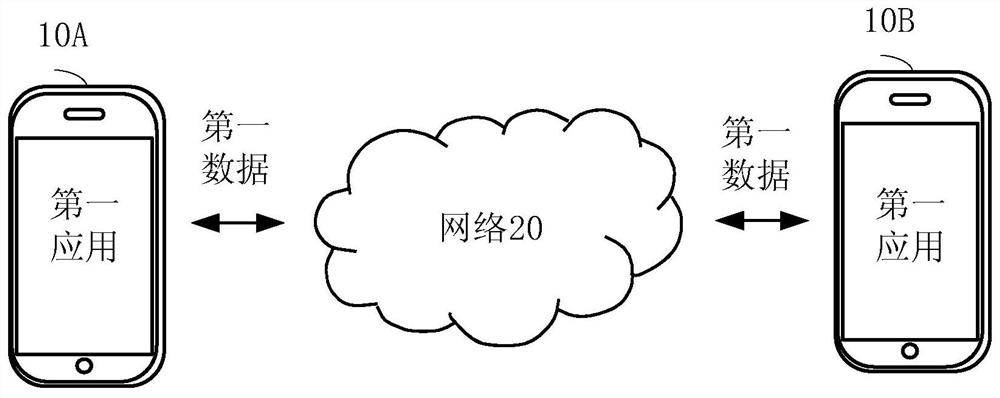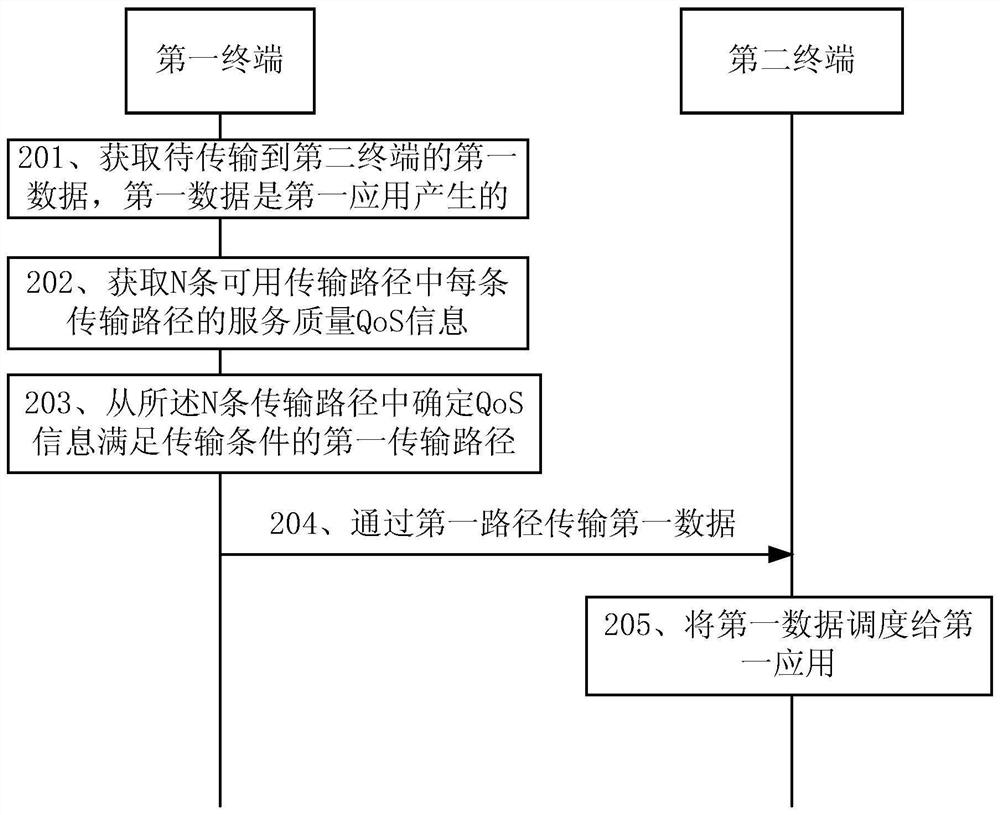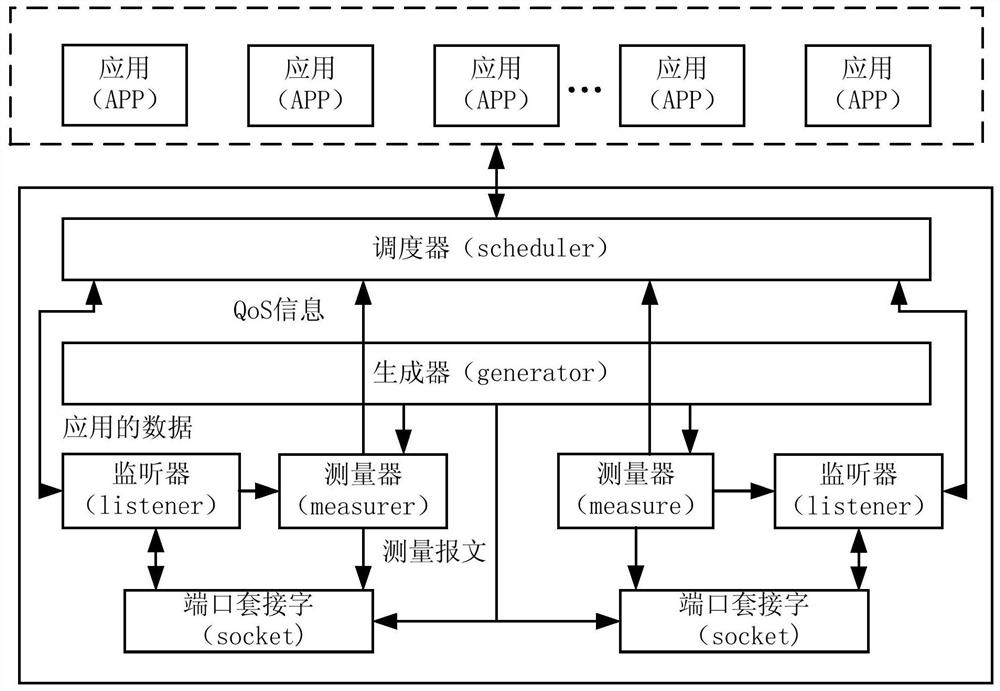Data transmission method, terminal and communication system
A data transmission and terminal technology, applied in the field of communication, can solve problems such as poor application data transmission effect and inability to meet transmission requirements, and achieve the effect of meeting the needs of service quality
- Summary
- Abstract
- Description
- Claims
- Application Information
AI Technical Summary
Problems solved by technology
Method used
Image
Examples
Embodiment Construction
[0058] Embodiments of the present application are described below in conjunction with the accompanying drawings. Apparently, the described embodiments are only part of the embodiments of the present application, not all of the embodiments. Those of ordinary skill in the art know that, with the development of technology and the emergence of new scenarios, the technical solutions provided in the embodiments of the present application are also applicable to similar technical problems.
[0059] The terms "first", "second" and the like in the description and claims of the present application and the above drawings are used to distinguish similar objects, and not necessarily used to describe a specific sequence or sequence. It is to be understood that the terms so used are interchangeable under appropriate circumstances such that the embodiments described herein can be practiced in sequences other than those illustrated or described herein. Furthermore, the terms "comprising" and "h...
PUM
 Login to View More
Login to View More Abstract
Description
Claims
Application Information
 Login to View More
Login to View More - R&D
- Intellectual Property
- Life Sciences
- Materials
- Tech Scout
- Unparalleled Data Quality
- Higher Quality Content
- 60% Fewer Hallucinations
Browse by: Latest US Patents, China's latest patents, Technical Efficacy Thesaurus, Application Domain, Technology Topic, Popular Technical Reports.
© 2025 PatSnap. All rights reserved.Legal|Privacy policy|Modern Slavery Act Transparency Statement|Sitemap|About US| Contact US: help@patsnap.com



